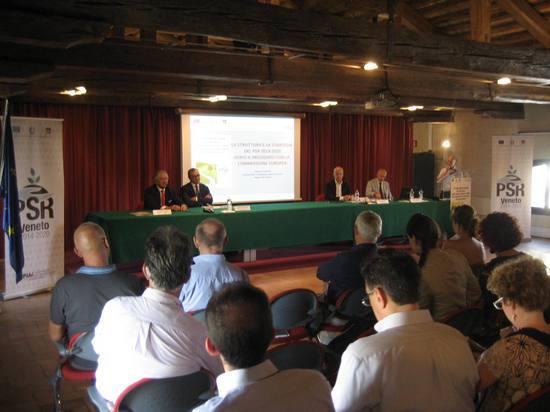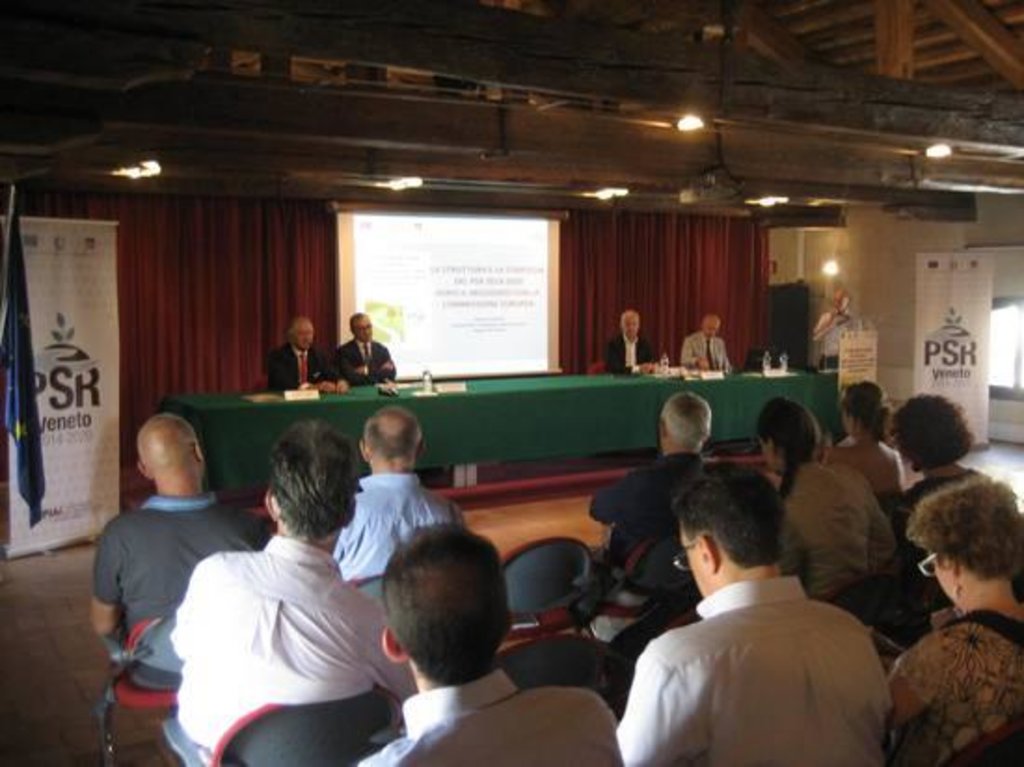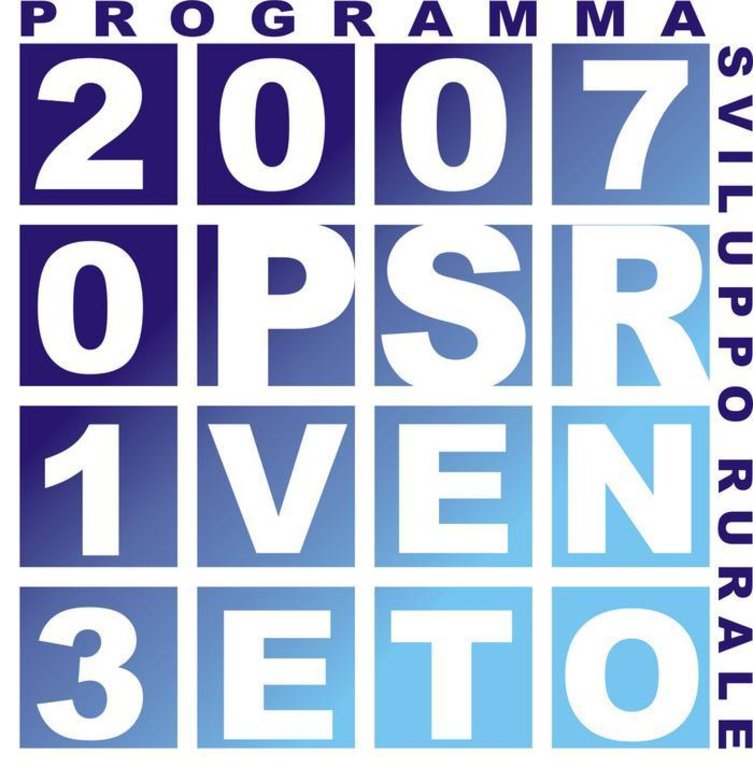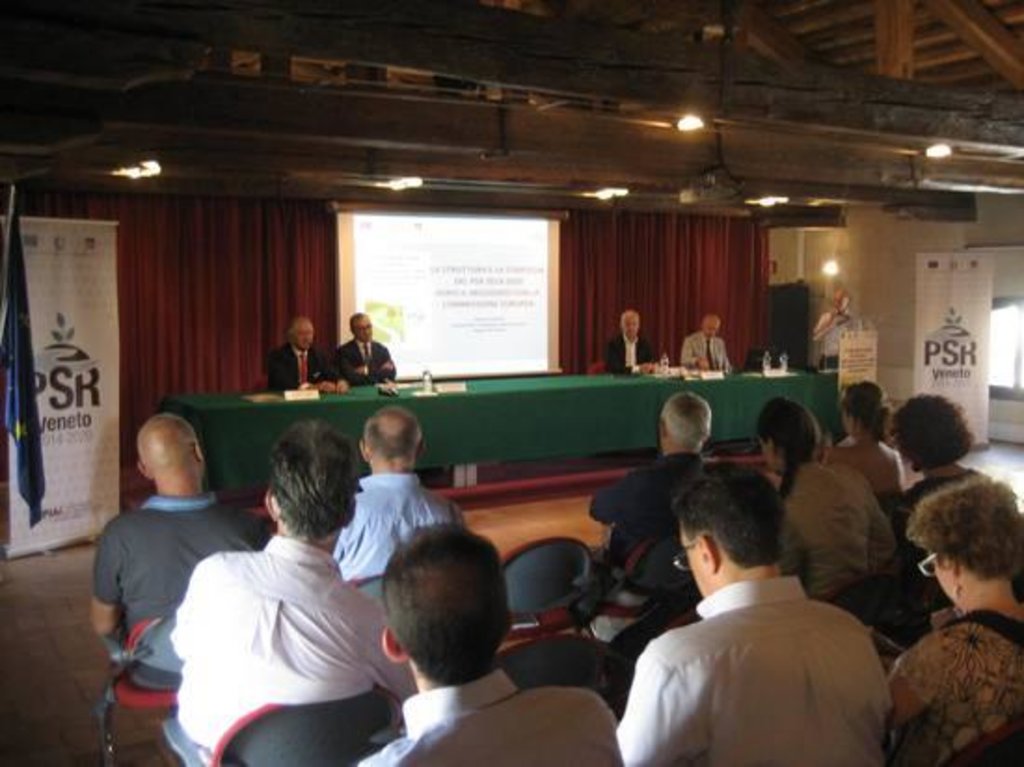Rural development programme in the Veneto region [Italy]
- Creation:
- Update:
- Compiler: Nicola Dal Ferro
- Editor: –
- Reviewer: Fabian Ottiger
Programma di sviluppo rurale in Veneto
approaches_2598 - Italy
View sections
Expand all Collapse all1. General information
1.2 Contact details of resource persons and institutions involved in the assessment and documentation of the Approach
SLM specialist:
Morari Francesco
DAFNAE - University of Padova
Italy
1.3 Conditions regarding the use of data documented through WOCAT
When were the data compiled (in the field)?
22/04/2015
The compiler and key resource person(s) accept the conditions regarding the use of data documented through WOCAT:
Yes
1.4 Reference(s) to Questionnaire(s) on SLM Technologies
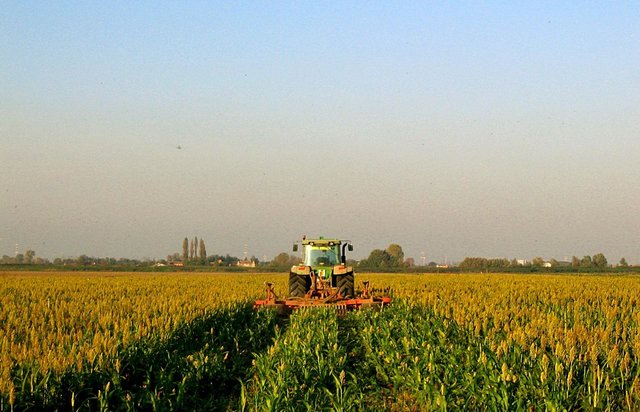
Continuous soil cover on croplands [Italy]
Maintenance of continuous soil cover; alternating crops and cover crops as a practice to improve soil quality and reduce diffuse agricultural water pollution
- Compiler: Nicola Dal Ferro
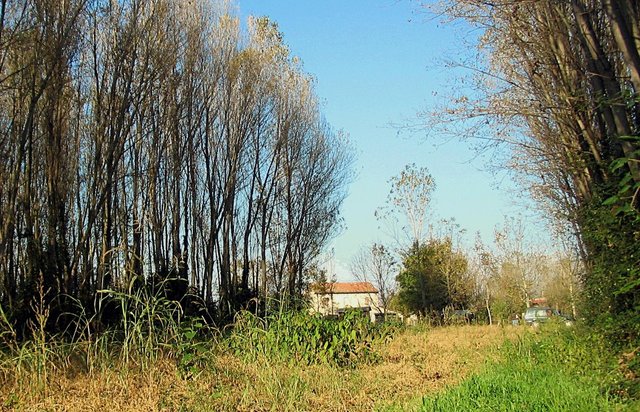
Agroforestry system [Italy]
Silvo-arable systems for production of annual crops on tree plots
- Compiler: Nicola Dal Ferro
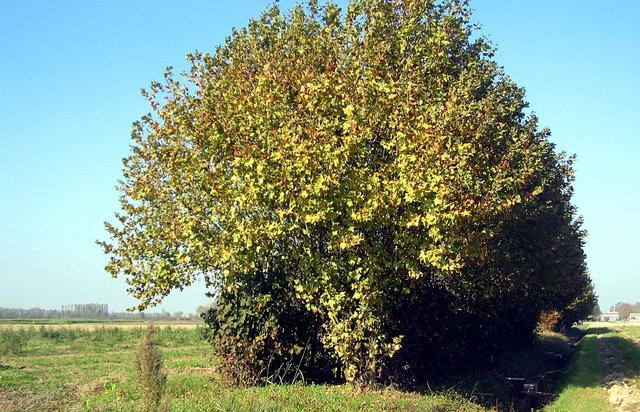
Vegetated buffer strips [Italy]
Buffer vegetation of agricultural land bordering to prevent nonpoint surface water pollution and soil erosion
- Compiler: Nicola Dal Ferro
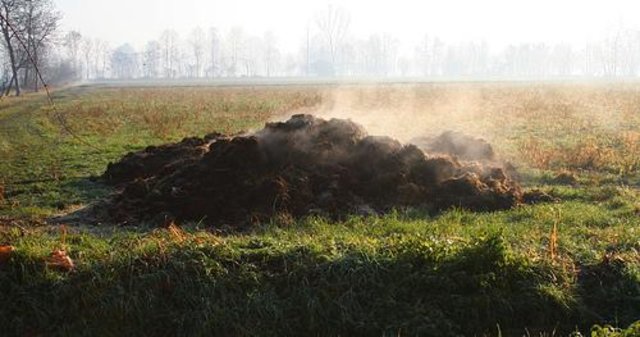
Re-introduction of organic amendments in croplands [Italy]
Re-introduction of biosolids to improve fertility of mineral soils
- Compiler: Nicola Dal Ferro
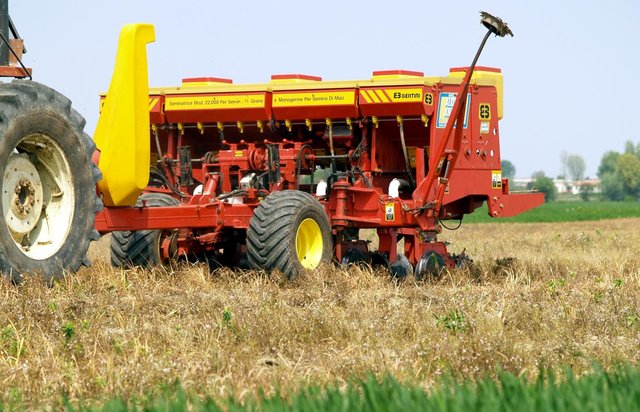
Conservation agriculture [Italy]
Sustainable crop production and residue management under no-tillage to improve soil fertility and increase environmental benefits
- Compiler: Nicola Dal Ferro
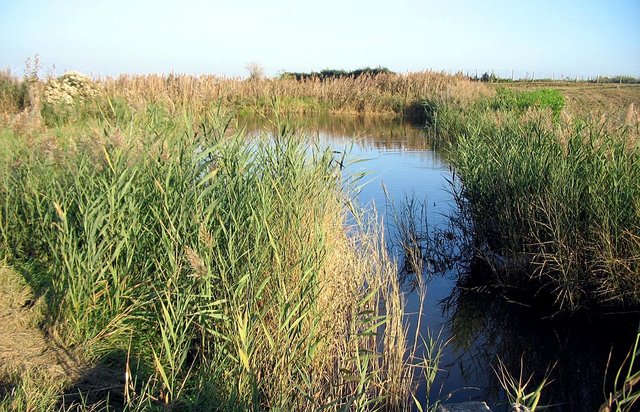
Wetland system [Italy]
Vegetated water basins for the control of diffuse pollution
- Compiler: Nicola Dal Ferro
2. Description of the SLM Approach
2.1 Short description of the Approach
Developing rural areas in the Veneto region through sustainable land management policies
2.2 Detailed description of the Approach
Detailed description of the Approach:
Aims / objectives: The objective of the Rural Development Programme (RDP) is to improve the farmers' activity by addressing economic, environmental and social challlenges. In this context, the RDP aims to grow the rural economy as well as improve the agro-environment. This is achieved by economically supporting: a) the multifunctionality of agriculture (e.g. crop production, natural environment, tourism etc.); b) the renovation of agriculture sector towards more efficient and competitive productive systems; c) the communities living and working in rural areas.
Methods: The Rural Development Programme is carried out through subsidies to farming practices following a cross-compliance principle. As a result, a combination of 'baseline' conservation measures with the RDP ones must be applied to achieve subsidised conservation measures.
Role of stakeholders: The level of subsidies is estimated on input or maintenance costs. Moreover, the yield loss is also taken into account due to implementation of some measures. These estimates were obtained through consultation among stakeholders, including farmer organisations, public enterprises and governments.
Other important information: The Rural Development Programme (RDP) in the years 2007-2013 was structured in four axes, corresponding to four lines of action: a) Improvement of competitiveness of the agricultural and forestry sector; b) Improvement of environment and rural areas; c) Improvement of quality of life and economic diversification in rural areas; d) Implementation of strategies for the local development.
2.3 Photos of the Approach
2.5 Country/ region/ locations where the Approach has been applied
Country:
Italy
Region/ State/ Province:
Italy
Further specification of location:
Veneto region
2.6 Dates of initiation and termination of the Approach
Indicate year of initiation:
2007
Year of termination (if Approach is no longer applied):
2013
2.7 Type of Approach
- project/ programme based
2.8 Main aims/ objectives of the Approach
The Approach focused mainly on SLM with other activities (fostering the competitiveness of agriculture; knowledge transfer; economic development in rural areas)
Rural development Programme (RDP) aims to improve both the socio-economic situation of rural areas as well as the agro-environmental quality. Main line of actions involve: a) increase of competitiveness of the agricultural and forestry sector; b) increase of environmental quality in rural areas; c) economic diversification of rural areas to promote a better quality of life.
The SLM Approach addressed the following problems: In the last decades, the over-simplification of agro-ecosystems due to intensive monoculture and high mechanisation led to reduced biodiversity, increased land degradation and water pollution and finally vulnerability of agroecosystems. A general low farm size and fluctuating commodity prices led to a reduction of incomes and inadequate generational turnover. These factors drove small farmers out of the market, especially in marginal areas, where the phenomenon has been associated to land abandonment (especially in hilly and mountainous areas).
2.9 Conditions enabling or hindering implementation of the Technology/ Technologies applied under the Approach
social/ cultural/ religious norms and values
- hindering
Land users are seldom tied to traditional systems and new technologies are difficulty adopted.
Treatment through the SLM Approach:
availability/ access to financial resources and services
- hindering
Fundings are sometimes very few for implementation of technologies
Treatment through the SLM Approach:
institutional setting
- hindering
Treatment through the SLM Approach:
legal framework (land tenure, land and water use rights)
- enabling
The existing land ownership, land use rights / water rights moderately helped the approach implementation: The RDP is seen as an opportunity for the development of the rural areas and the adoption of SLM measures is fostered
- hindering
Treatment through the SLM Approach:
knowledge about SLM, access to technical support
- hindering
Lack of expertise and technical skills for technology implementation
Treatment through the SLM Approach:
workload, availability of manpower
- hindering
Treatment through the SLM Approach:
3. Participation and roles of stakeholders involved
3.1 Stakeholders involved in the Approach and their roles
- local land users/ local communities
Difference between men and women because employees in the agriculture sector are traditionally men
- SLM specialists/ agricultural advisers
- local government
- national government (planners, decision-makers)
- international organization
If several stakeholders were involved, indicate lead agency:
The RDP is adopted by regional government, but also following the requests and the needs of land users.
3.2 Involvement of local land users/ local communities in the different phases of the Approach
| Involvement of local land users/ local communities | Specify who was involved and describe activities | |
|---|---|---|
| initiation/ motivation | interactive | |
| planning | external support | |
| implementation | passive | |
| monitoring/ evaluation | none | |
| Research | interactive |
3.4 Decision-making on the selection of SLM Technology/ Technologies
Specify who decided on the selection of the Technology/ Technologies to be implemented:
- politicians/ leaders
Explain:
Decisions on the method of implementing the SLM Technology were made by mainly by SLM specialists with consultation of land users
4. Technical support, capacity building, and knowledge management
4.1 Capacity building/ training
Was training provided to land users/ other stakeholders?
Yes
Specify who was trained:
- land users
- field staff/ advisers
Form of training:
- farmer-to-farmer
- demonstration areas
- public meetings
- courses
Subjects covered:
Mainly training on technical implementation of the technology, access to finance and project planning.
4.2 Advisory service
Do land users have access to an advisory service?
Yes
Specify whether advisory service is provided:
- at permanent centres
Describe/ comments:
Name of method used for advisory service: Authorised advisory services, public and private; Key elements: Objectives, Project design, Administrative support
Advisory service is quite adequate to ensure the continuation of land conservation activities
4.3 Institution strengthening (organizational development)
Have institutions been established or strengthened through the Approach?
- yes, moderately
Specify the level(s) at which institutions have been strengthened or established:
- local
4.4 Monitoring and evaluation
Is monitoring and evaluation part of the Approach?
Yes
Comments:
bio-physical aspects were monitored by government through observations
bio-physical aspects were monitored by government through measurements
management of Approach aspects were monitored by government through observations
There were few changes in the Approach as a result of monitoring and evaluation: Ameliorations in the calls to fit requirements and possible applications. (e.g. more adequate finacial compensations; administrative simplifications, etc.)
There were no changes in the Technology as a result of monitoring and evaluation
4.5 Research
Was research part of the Approach?
Yes
Specify topics:
- economics / marketing
- ecology
5. Financing and external material support
5.1 Annual budget for the SLM component of the Approach
If precise annual budget is not known, indicate range:
- > 1,000,000
Comments (e.g. main sources of funding/ major donors):
Approach costs were met by the following donors: local government (district, county, municipality, village etc): 100.0%
5.2 Financial/ material support provided to land users
Did land users receive financial/ material support for implementing the Technology/ Technologies?
Yes
5.3 Subsidies for specific inputs (including labour)
- equipment
| Specify which inputs were subsidised | To which extent | Specify subsidies |
|---|---|---|
| machinery | partly financed | |
| tools | partly financed | |
- agricultural
| Specify which inputs were subsidised | To which extent | Specify subsidies |
|---|---|---|
| seeds | partly financed | |
| fertilizers | partly financed | |
- construction
| Specify which inputs were subsidised | To which extent | Specify subsidies |
|---|---|---|
| stone | partly financed | |
| wood | partly financed | |
- infrastructure
| Specify which inputs were subsidised | To which extent | Specify subsidies |
|---|---|---|
| roads | partly financed | |
| schools | partly financed | |
5.4 Credit
Was credit provided under the Approach for SLM activities?
Yes
6. Impact analysis and concluding statements
6.1 Impacts of the Approach
Did the Approach help land users to implement and maintain SLM Technologies?
- No
- Yes, little
- Yes, moderately
- Yes, greatly
The RPD aims at improving SLM practices in the Veneto region with an economic support. Biodiversity, environmental and water quality, soil protection are key elements of RDP to support SLM practices.
Did the Approach empower socially and economically disadvantaged groups?
- No
- Yes, little
- Yes, moderately
- Yes, greatly
Did other land users / projects adopt the Approach?
- No
- Yes, little
- Yes, moderately
- Yes, greatly
Whole around Italy and Europe the RDP was used as a tool for improving the environment and the quality of life in rural areas.
Did the Approach lead to improved livelihoods / human well-being?
- No
- Yes, little
- Yes, moderately
- Yes, greatly
Economic support to farmers and land users for imrpoving the environmental quality led to improved human well-being for all the community.
Did the Approach help to alleviate poverty?
- No
- Yes, little
- Yes, moderately
- Yes, greatly
6.2 Main motivation of land users to implement SLM
- increased profit(ability), improved cost-benefit-ratio
- payments/ subsidies
6.3 Sustainability of Approach activities
Can the land users sustain what has been implemented through the Approach (without external support)?
- uncertain
If no or uncertain, specify and comment:
Some technologies are adopted only on the basis of contributions that are provided. In the long-term, the technology could be abandoned if not funded anymore. As a result, some technologies are not economically sustainable.
6.4 Strengths/ advantages of the Approach
| Strengths/ advantages/ opportunities in the compiler’s or other key resource person’s view |
|---|
| The approach has a holistic view for the environment and human-well being improvement by including and integrating several SLM practices. (How to sustain/ enhance this strength: Include more SLM measures ) |
6.5 Weaknesses/ disadvantages of the Approach and ways of overcoming them
| Weaknesses/ disadvantages/ risks in the land user’s view | How can they be overcome? |
|---|---|
|
Implementation of SLM due to the approach is time-consuming due to excessive bureaucracy |
Administrative simplification |
| Weaknesses/ disadvantages/ risks in the compiler’s or other key resource person’s view | How can they be overcome? |
|---|---|
| The adoption of some measures thanks to the approach is usually limited to the time in which there are subsidies, without | Maintain the subsidies and the approach for the longest possible time |
7. References and links
7.1 Methods/ sources of information
- field visits, field surveys
- interviews with land users
7.2 References to available publications
Title, author, year, ISBN:
Programma di sviluppo rurale per il veneto 2007-2013, Regione Veneto, 2007. Dipartimento Agricoltura e Sviluppo Rurale.
Links and modules
Expand all Collapse allLinks

Continuous soil cover on croplands [Italy]
Maintenance of continuous soil cover; alternating crops and cover crops as a practice to improve soil quality and reduce diffuse agricultural water pollution
- Compiler: Nicola Dal Ferro

Agroforestry system [Italy]
Silvo-arable systems for production of annual crops on tree plots
- Compiler: Nicola Dal Ferro

Vegetated buffer strips [Italy]
Buffer vegetation of agricultural land bordering to prevent nonpoint surface water pollution and soil erosion
- Compiler: Nicola Dal Ferro

Re-introduction of organic amendments in croplands [Italy]
Re-introduction of biosolids to improve fertility of mineral soils
- Compiler: Nicola Dal Ferro

Conservation agriculture [Italy]
Sustainable crop production and residue management under no-tillage to improve soil fertility and increase environmental benefits
- Compiler: Nicola Dal Ferro

Wetland system [Italy]
Vegetated water basins for the control of diffuse pollution
- Compiler: Nicola Dal Ferro
Modules
No modules


